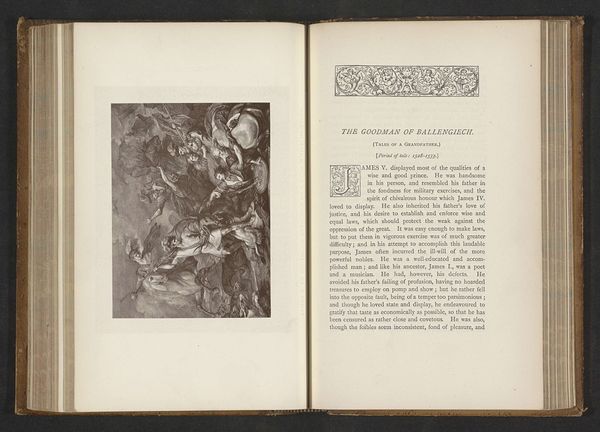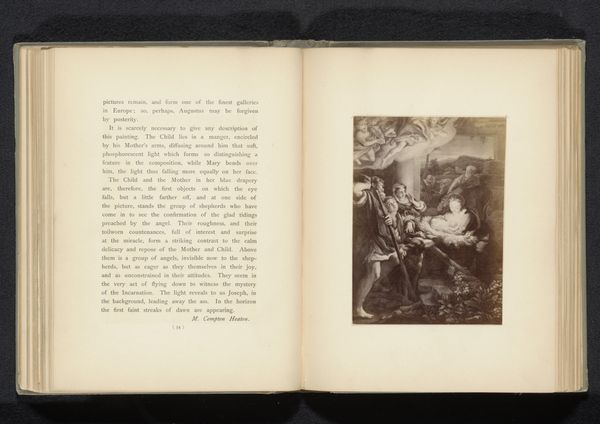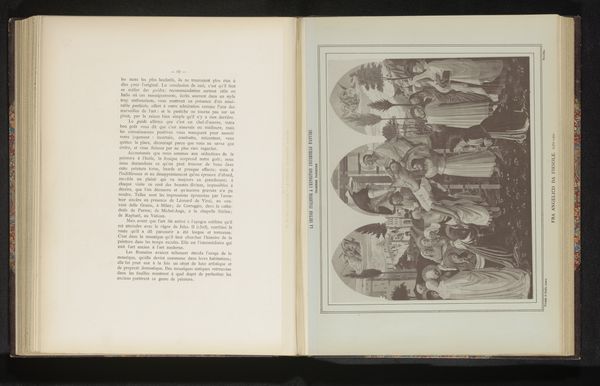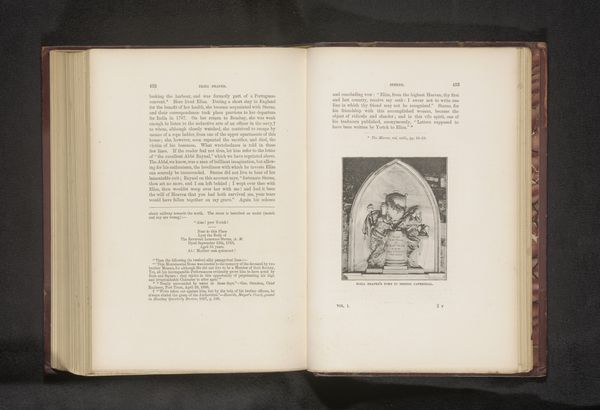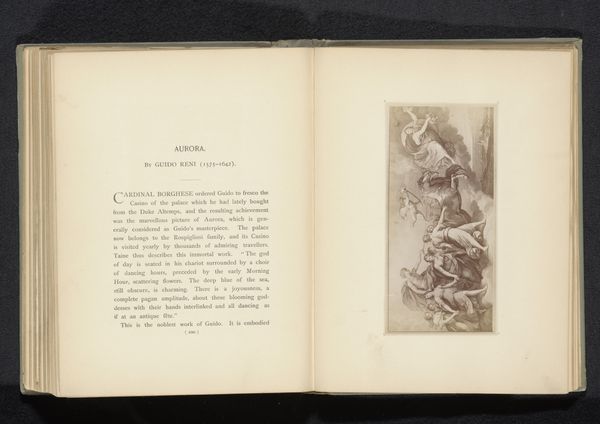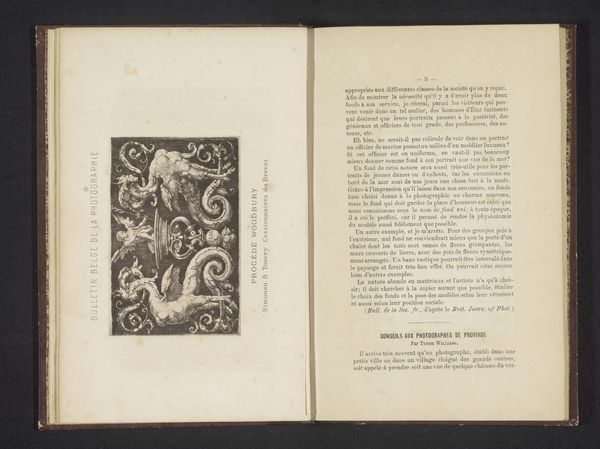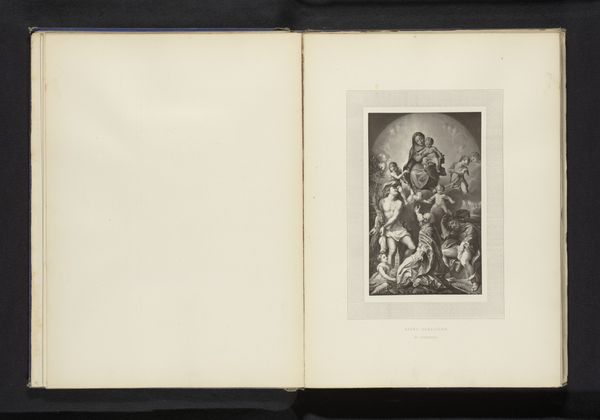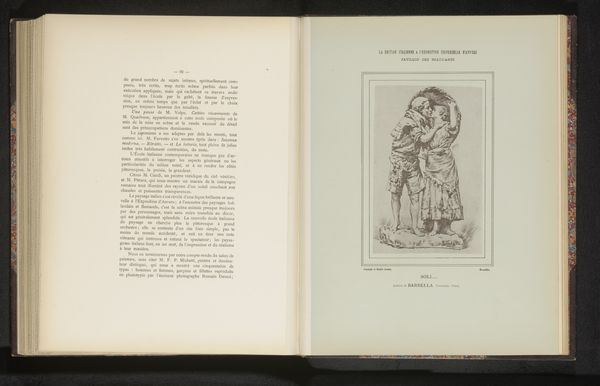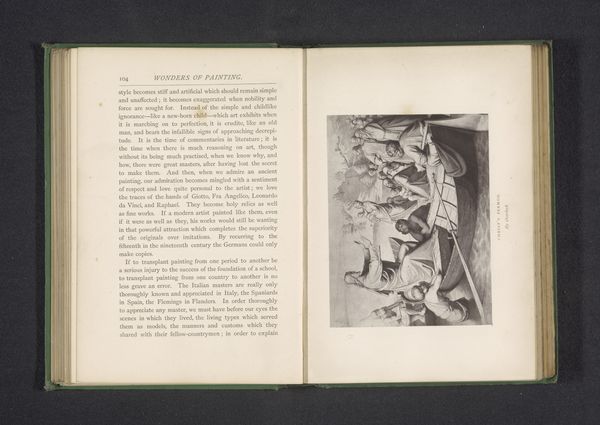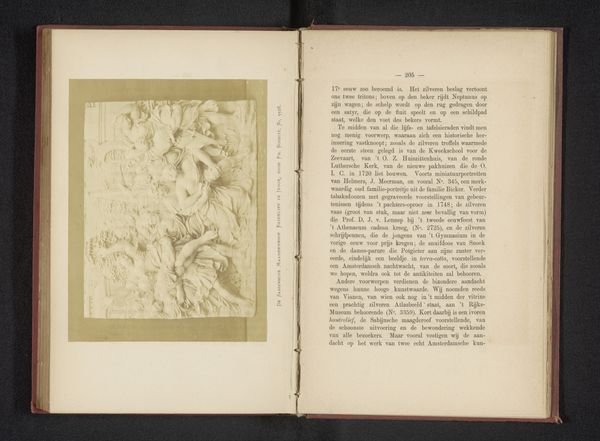
print, etching, textile, paper
#
portrait
#
narrative-art
# print
#
etching
#
textile
#
paper
#
11_renaissance
#
history-painting
Dimensions: height 86 mm, width 118 mm
Copyright: Rijks Museum: Open Domain
Editor: We’re looking at a print, specifically an etching on paper, titled "James V of Scotland attacked by a stag while hunting." It's listed as created before 1881, by an anonymous artist. It seems to capture a really chaotic, almost theatrical moment. What do you see in this piece? Curator: Well, placed within the context of history painting, this image depicts a dramatic episode—likely intended to resonate with national identity and ideas about leadership. Considering its location in a book, how do you think this image functions alongside the text? Does it serve primarily as an illustration or something more? Editor: I guess I hadn't thought about it in relation to the text beside it! Maybe it’s meant to give a romantic, visual spin on a particular story about James V, to enhance the narrative. Curator: Precisely. The print revives the Renaissance theme during the late 19th century, potentially to emphasize the noble ancestry or to visually legitimize power. But it’s also interesting to consider how mass-produced images shape our understanding of historical events. Who would have had access to this book and therefore this portrayal of James V? Editor: That’s a good point. So the narrative being presented isn't just about the event itself but also about how power is perceived and maintained by those consuming the image and text. Did this era have a specific agenda it wanted to project? Curator: Absolutely. History paintings – even in printed form – serve as powerful tools. What seems like a simple illustration, becomes a statement on national pride, cultural heritage, and even social hierarchy, all circulated within specific societal structures like libraries or upper-class homes. Editor: It’s fascinating to think about how seemingly simple images like this operate within complex systems of power and history! Curator: Indeed. This small etching provides much to consider. I will reflect more about that. Thank you!
Comments
No comments
Be the first to comment and join the conversation on the ultimate creative platform.
